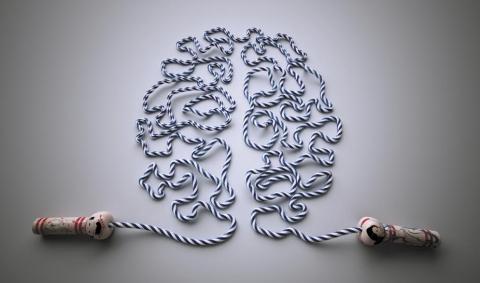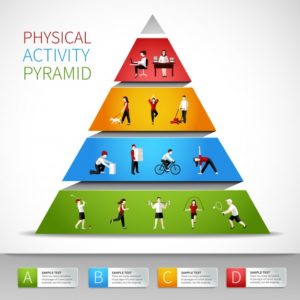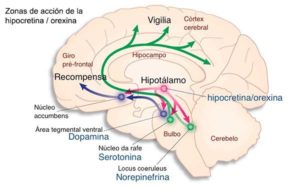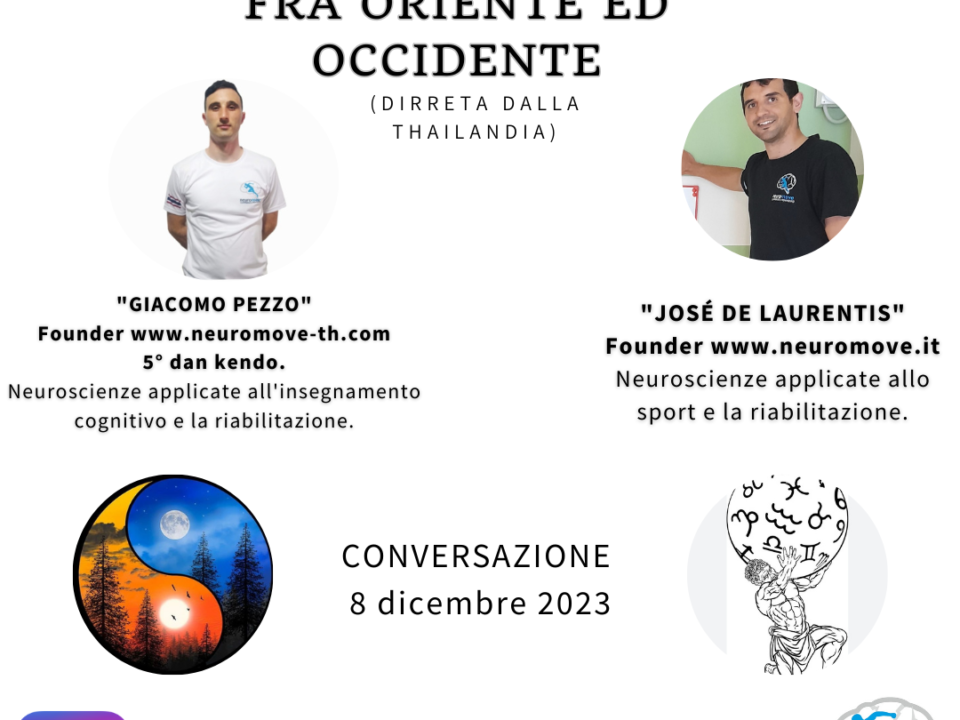- Motion Realizing
- info@neuromove.it
PHYSICAL ACTIVITY AND COGNITIVE SYSTEM

Keyword: physical activity - cognitive apparatus - human cognition - hippocampus - consciousness of movement - decision-making capacity – psycho-neuro-endo-immunology-crino.
INTRODUCTION
For some years now the role that physical activity plays in our lives has become very important, as a priority. It is understood that especially for people who, due to an accident or problems related to their health, they should seriously consider physical activity as a real even better medicine than those found in pharmacies. This does not want to neglect the importance of covering the latter, particularly in the acute phases of illness, but you want to recognize physical activity the ability to bring about positive effects on all systems, organs and systems that make up the human being.
Sappiamo dei benefici che derivano dall’attività aerobica sul sistema cardiovascolare, degli effetti dello stretching sulla mobilità articolare e del movimento in generale sull’artrosi e su altre patologie degenerative, ma poco si sente parlare della relazione tra l’esercizio fisico e l’apparato cognitivo, degli effetti che l’uno ricopre sull’altro e viceversa. Proprio riguardo a questa affermazione nasce spontanea una domanda: è l’attività fisica a sviluppare il cognitivo o il cognitivo che sviluppa l’attività fisica?

SCIENTIFIC ANALYSIS
In an article published by Fabio Perna is reported that Griffin studies and other researchers have shown that "it is a single session of exercise that exercise carried out in chronic form, it has improved the performance sedentary young men (22 ± 2 years) in performing facial recognition tasks (associative memory) "and that" the most healthy older adults with higher levels of fitness, have less cognitive impairment and reduced risk for dementia and Alzheimer's disease than those with levels of fitness more low. "
L’analisi proposta in questo articolo è centrata sulla produzione dell’Orexina (detta anche Hipocretina, neuropeptide che regola lo stato di vigilanza, coscienza e appetito) favorita dall’esercizio fisico, la quale ha effetti benefici sulla cognizione, plasticità e funzione dell’ippocampo (memoria), oltre che influire positivamente sulla regolazione dell’umore. Infatti, da uno studio condotto dagli scienzati della University of California di Los Angeles, sembrerebbe che i livelli di questo ormone risultino aumentati quando siamo felici e quasi nulli quando siamo giù di morale, in quanto la più comune forma di narcolessia (depressione e pessimo umore) è legata alla mancanza di Orexina nel cervello dovuta alla distruzione delle cellule che la producono.
This analysis, purely chemical, so it gives us an important reference on how to get active after a hard day's work, on how much the movement as a form of expression of their personality or their presence in childhood and old age, are of fundamental importance for a proper neurological development. In essence, it is considering physical activity as a function of cognitive.

THE PSYCHO-NEURO-ENDO-CRINO-IMMUNOLOGY IN HISTORY
It is the discipline that studies the two-way relationship between psyche and biological systems. In the psycho-neuro-endo-immunology-crino converge, all 'inside of a single model, knowledge (as the 30s of XX century) dall'endocrinologia, immunology and neuroscience.
In the 30 was established for the first time, thanks to the work of the German Hugo Besedovky, a two-way connection between the biological brain, stress and immunity; he showed that the stress reaction is independent of the nature of the stimulus.
In the second half of the eighties, the American physiologist Edween Blalock It showed that the lymphocytes have receptors for hormones and neurotransmitters produced by the brain and at the same time, produce hormones and neurotransmitters. It was so conclusively demonstrated two-way communication between the brain and immunity.
The nineties of the last century have seen significant growth of the studies on the neurobiology of emotions. The non-regulation of the stress system by emotions, trauma and stressful events in general, powerfully alter the structure and functioning of the immune system.
the first decade of the twenty-first century, studies show that even diseases like atherosclerosis and heart disease are usually strongly affected mood; depression, with the superposition de cortisol and catecholamines, contributes to alter the inner wall of the vessels, favoring the formation of the atherosclerotic lesion.
Finally, investigations of the first decade of this century have shown that an immune inconsistency in inflammatory level can be responsible for the symptoms that traditionally is referred to the "somatization" and the typical symptoms "psychosomatic" that accompany it troubles, which deals with the psychology and psychiatry (anxiety depression, chronic fatigue syndrome) is more proper medical disorders (autoimmune diseases, cancer).
In conclusion, we can say that with psycho-neuro-endo-immunology-crino is looming in a search pattern and disease health interpretation that sees the human body as a unit structured and interconnected where the psychic and biological systems They are mutually conditioning.
THE REALITY OF MOVEMENT
Ciò che non viene detto nei riguardi dell’attività fisica è che, al giorno d’oggi, rimane un tabù per molte persone, costa fatica e spesso viene svolta in modalità errate che possono addirittura avere effetti negativi. Siamo a conoscenza dei moltissimi benefici che può apportare al fisico, siamo d’accordo su tutti i dati scientifici e sperimentali delle ricerche e degli studi condotti in merito, ma risulta sempre difficile considerare l’attività fisica come una priorità. Un esempio classico lo troviamo nel comune individuo che è costretto a praticare attività solo dopo avere subito un infarto, o in chi non si accorge dei danni che la rigidità muscolare sta procurando al proprio corpo come anche alla propria elasticità celebrale.
Ecco che, allo scopo di sviluppare una maggior sensibilità nei confronti dell’attività fisica, possiamo analizzare l’articolo in questione dal punto di vista contrario, seguendo una metodologia che parte dai processi cognitivi umani per poi sviluppare il movimento e, di conseguenza, l’attività fisica. Si intende fornire delle istruzioni che possano essere recepite direttamente dal sistema nervoso centrale che, una volta elaborate, riescano a consolidare la coscienza del movimento che si sta effettuando e ad attribuire al nostro sistema cognitivo la capacità di scegliere quale movimento è più corretto eseguire in una determinata situazione, in modo che l’attività fisica nasca dal sistema neurologico come mezzo per risolvere un determinato problema (motorio).
CONCLUSION
Torniamo all’ippocampo e ai miglioramenti che apporta l’attività fisica alle sue funzioni di memoria; la metodologia NEUROMOVE, ad esempio, dispone di molte esercitazioni che partono proprio dall’aspetto mnemonico, come memorizzare una sequenza di colori, di numeri o di movimenti che sono in grado di produrre, a sua volta, un movimento. Con questo non si vuole neutralizzare nessuna idea di pensiero, ma si vuole mettere in luce il fatto che, essendo l’esercizio fisico importante per lo sviluppo dei processi neurologici e cognitivi, ed essendo il movimento il precursore dell’attività fisica, anche l’aspetto neurologico può essere stimolato per l’apprendimento del movimento e per un maggiore sviluppo dei processi cognitivi stessi. Infatti, anche avere una maggior consapevolezza dell’attività fisica, apprenderne il significato e verificarne i benefici passano attraverso la cognizione umana.
That's why we Physical Educators, movement specialists, we have to comply with this reality, we must understand the importance of interdisciplinary work and propose sometimes teaching methods to the teaching of movement, which can contribute to psychology and medical sciences as a therapeutic means of self-knowledge the possibility that the neuro-cognitive-motor activity gives our body. All this not only as preparation for a possible sports competition, if not also as a creative medium for the psychological and mental development.
SOURCES:
- Hippocampus: anatomy, function and role of memory | https://medicinaonline.com;
- Physical exercise improves cognitive functions: orexin's role | Fabio Perna | https://chinesiogroup.it;
- Orexin | https://en.m.wikipedia.org;
- Epigenetics and Psiconeuroendocrinoimmunology "Francesco Bottaccioli".
AUTHORS
Giacomo Pezzo - Jose De Laurentis





